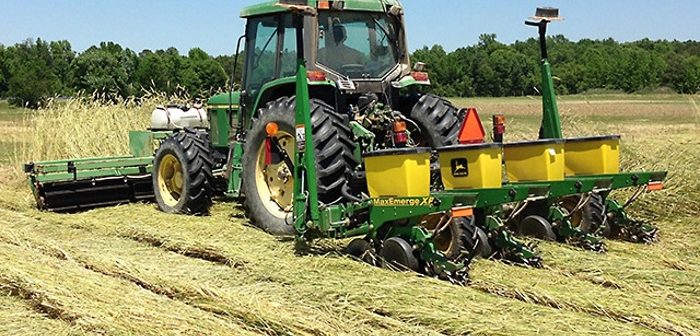Cotton farmers in Alabama who use cover crops have a new, cost-cutting option. They can kill their cover crops and plant their cotton in the same pass through a field, according to Agricultural Research Service (ARS) scientists.
Cover crops are gaining in popularity because they suppress weeds and help retain moisture and nutrients. Farmers typically plant cover crops in the fall and kill them in the spring by flattening them with a roller, spraying them with herbicides, or both. After killing the cover crop, growers plant a cash crop in the same field. That usually requires two passes of a tractor: one to kill the cover crop and another a few weeks later to plant the cash crop.
Ted Kornecki, an ARS agricultural engineer in Auburn, Alabama, wanted to see if cotton farmers could save on labor and fuel costs by making just one tractor pass.
He and his colleagues planted rye as a cover crop, killed it, and then planted cotton using two strategies. In some plots, they killed the rye with a roller and then made a second pass three weeks later to plant cotton. In other plots, they killed the rye and planted the cotton during a single tractor pass. They compared the number of cotton plants produced, their vigor, and yields over three years. They also calculated the fuel and labor costs for each tractor pass.
They found that the plots where one tractor pass was made produced higher yields during the three years, producing an average of about 2.5 percent more cotton per acre. Their results also showed that for typical 600-acre cotton farm, the single-pass approach would save more than $2,000 a year in fuel and labor costs.
The standard two-pass approach may still make economic sense because of potentially higher yields and revenues, according to Kornecki, with the ARS National Soil Dynamics Laboratory in Auburn. However, the single-pass approach is a viable option that may become even more advantageous in the future, particularly if cotton prices stay low and fuel and labor costs continue to rise.




